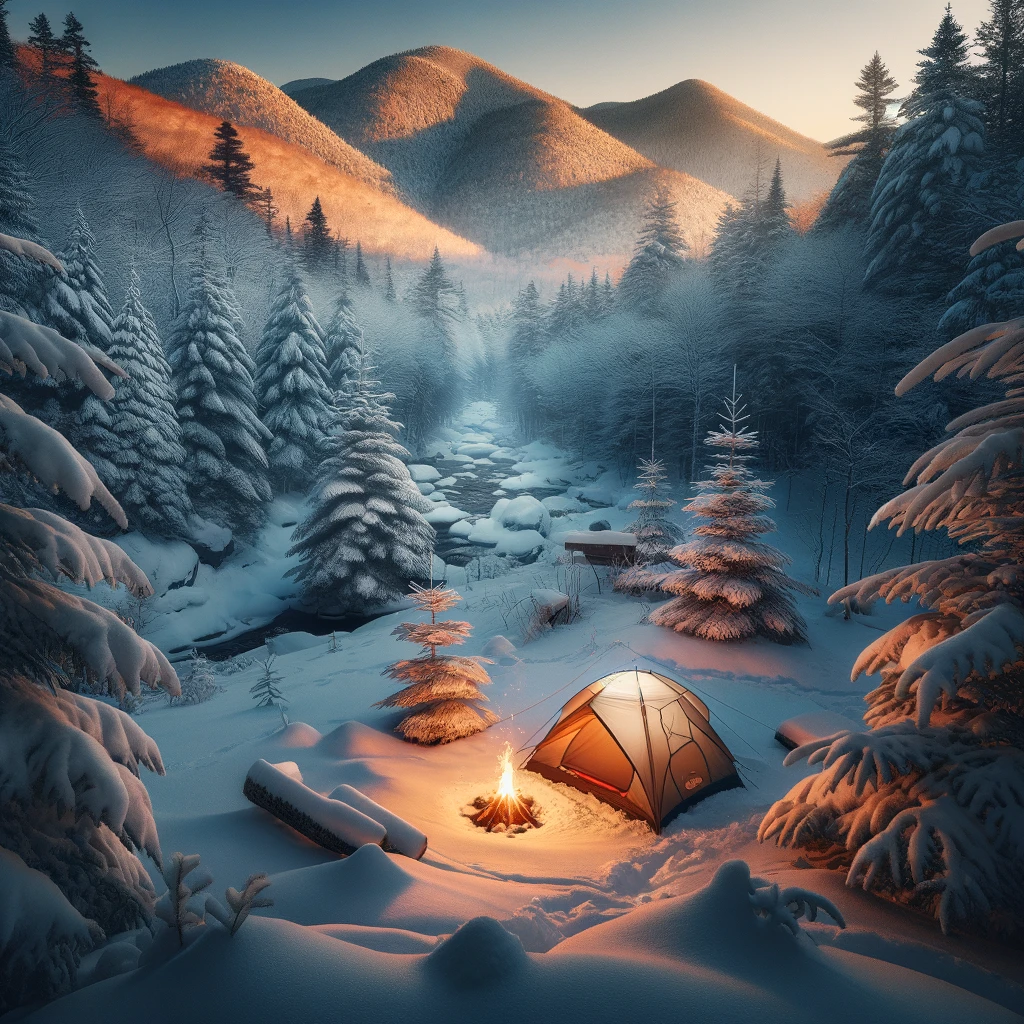Winter camping offers photographers a unique opportunity to capture the raw beauty of nature in its most pristine state. The stark contrast of snow-covered landscapes, the soft glow of winter light, and the intimate moments of camp life in cold conditions combine to create truly magical photographic opportunities. However, winter camping photography also presents its own set of challenges. We will help you navigate these challenges and enhance your winter camping photography adventures.
Essential Gear for Winter Photography
When it comes to winter camping photography, having the right gear is crucial. Cold-resistant camera bodies and weather-sealed lenses are essential for protecting your equipment from the harsh elements. Invest in a camera that can withstand sub-zero temperatures and has a good battery life in cold conditions.
Accessories play a vital role in winter photography. Always keep extra batteries close to your body to preserve their functionality. Consider using lens filters specifically designed for snow conditions, such as polarizers to reduce glare and neutral density filters to capture long exposures of snowy landscapes.
Protecting your gear is paramount. Use a camera rain cover or a DIY solution like a plastic bag to shield your camera from snow and moisture. An insulated camera bag will help keep your equipment at a stable temperature and prevent condensation issues.
Mastering Winter Exposure
One of the biggest challenges in winter photography is dealing with snow’s bright, reflective nature. To avoid overexposed images, use exposure compensation techniques. Generally, you’ll need to overexpose by 1-2 stops to capture snow as white rather than gray. Always check your histogram to ensure you’re not clipping highlights or shadows.
Capturing contrast in winter scenes can create dramatic images. Look for dark subjects against snowy backgrounds, such as bare trees or wildlife. Utilize shadows cast by the low winter sun to add depth and dimension to your compositions.
Composition in Winter Landscapes
Winter landscapes can often appear vast and featureless, making composition crucial. Look for focal points that stand out against the snow, such as isolated trees, rock formations, or even human elements like a colorful tent. These points of interest will give your images depth and draw the viewer’s eye.
Take notice of the intricate patterns and textures that winter creates. Capture the delicate formations of frost on leaves, the geometric patterns of ice on lakes, or the wind-sculpted shapes in snowdrifts. These details can make for compelling abstract images or add interest to wider landscape shots.
Lighting Techniques for Winter Scenes
Winter sunrises and sunsets’ soft, golden light can transform snowy landscapes into ethereal scenes. Plan your shoots around these golden hours for the most flattering light. Long exposures during blue hour can create a dreamy atmosphere, especially when capturing moving water or clouds against snowy backdrops.
Winter nights offer incredible opportunities for astrophotography. The long, dark nights and often clear winter skies are perfect for capturing star trails or the aurora borealis. Experiment with light painting techniques to illuminate foreground elements in your night shots.
Specialized Winter Photography Techniques
For those interested in macro photography, winter provides a unique canvas. Capture the intricate details of individual snowflakes or frost patterns on windows. When shooting macro in cold conditions, be mindful of condensation when moving between temperatures. Allow your gear to acclimate slowly to prevent fogging.
Action shots in snow can be exhilarating to capture. When photographing winter activities like skiing or snowboarding, use fast shutter speeds to freeze motion. Consider using flash as fill light to balance the bright snow with shadowed areas on your subjects.
Post-Processing Winter Images
In post-processing, pay special attention to color correction. Snow can often appear blue in photos, so adjust your white balance to achieve a natural look. Enhancing the cool tones of winter scenes can create a mood that reflects the chilly atmosphere.
When enhancing details, be careful not to overdo it. Subtle adjustments to bring out textures in snow and ice can add depth to your images without making them look unnatural. Use local adjustments to balance contrast in high-dynamic range winter scenes.
Protecting Your Gear in Extreme Cold
Preventing condensation is crucial when moving between cold outdoor environments and warm interiors. Use silica gel packets in your camera bag, and consider keeping your gear in airtight, dry bags when not in use.
Keeping batteries warm is essential for extended shooting sessions. Store spare batteries close to your body, and consider using hand warmers near your camera to preserve battery function.
Camping Considerations for Photographers
When navigating snowy terrain for winter camping and hiking, choose campsites with photographic potential. Look for locations with interesting landscape features or good vantage points for sunrise and sunset shots. Set up your camp to allow easy access to your gear for early morning shoots.
Balance your photography pursuits with camp life responsibilities. Involve your campmates in your photographic process – they can make terrific subjects and add a human element to your landscape shots.
Ethical Considerations in Winter Photography
Always prioritize the well-being of the environment and wildlife over getting the perfect shot. Be mindful of your impact on fragile winter ecosystems and maintain a respectful distance from animals, who may be particularly vulnerable during winter.
Storytelling Through Winter Camping Photography
Aim to capture the full winter camping experience, not just the landscapes. Document the small moments of camp life, the challenges of cooking in the cold, and the camaraderie of sharing a tent in winter conditions. These images will help tell the complete story of your winter camping adventure.
Conclusion
Winter camping photography offers unparalleled opportunities to capture the serene beauty of snow-covered landscapes and the unique experiences of cold-weather camping. By mastering the technical challenges, embracing the unique lighting conditions, and keeping your gear dry in winter conditions, you can create stunning images that truly capture the magic of winter.

Leave a Reply